RT9125 30W Stereo Digital Audio Amplifier: Product Key Features and Application Examples
Allen Lin, Sophia Tong | AN088 May 2025
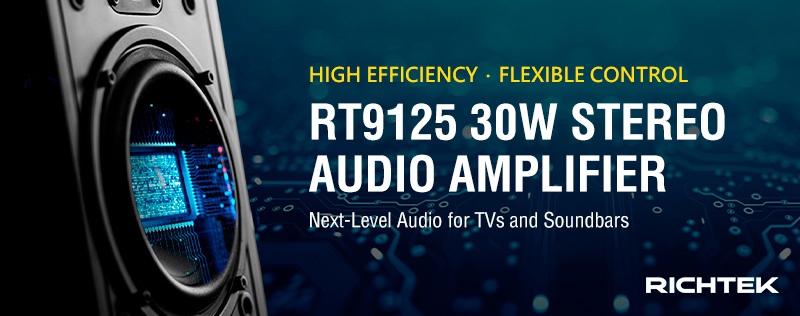
With the increasing demand for high-performance, low-power, and compact audio systems such as LCD/OLED TVs, soundbars, and home audio systems, Richtek introduces the RT9125 stereo digital audio amplifier, offering a flexible and efficient solution for modern audio applications.
The RT9125 provides dual-channel 30W output capability and integrates Richtek’s patented Common Mode Hopping (CMH) technology, significantly reducing power consumption at typical listening levels (<5W output). Furthermore, the amplifier features independent Dynamic Range Compression (DRC) control for each channel, ideal for multi-channel audio applications. This unique functionality simplifies system design and enhances design flexibility.
Additionally, it supports up to 768kHz Class-D switching, enabling smaller output filter inductors and more compact PCB layout. An inductor-less design is supported below 15V operating voltage, reducing BOM cost. This application note provides an in-depth discussion of the RT9125’s key features and practical application examples, assisting you in developing audio products.
1 Product Key Features
1.1 Patented CMH Technology for Power Efficiency
The RT9125 features Richtek’s patented Common Mode Hopping (CMH) topology, specifically designed to improve efficiency under light-load conditions. Typically, audio systems operate predominantly at low output power levels (below 5W). In conventional BD amplifier topology, the fixed 50% duty cycle results in high inductor ripple current, increasing system power losses.
CMH topology addresses this issue by dynamically reducing the switching duty cycle at lower power outputs. As shown in Figure 1, the RT9125 adjusts the BD architecture’s traditional 50% duty cycle (red dotted line) down to approximately 25% (blue solid line), significantly decreasing inductor ripple current.
The inductor ripple current formula is given by:
Iripple = (Duty × PVDD) / (2 × fs × L)
From this formula, reducing the duty cycle effectively decreases ripple current, lowering the average inductor current and overall power consumption. Figure 2 illustrates the actual efficiency results under light-load conditions, demonstrating that CMH topology achieves efficiency up to 91%, reducing power consumption by approximately 100mW compared to conventional methods. This extends battery life significantly in portable devices.

Figure 1. BD vs. CMH Operation: Inductor Ripple Current
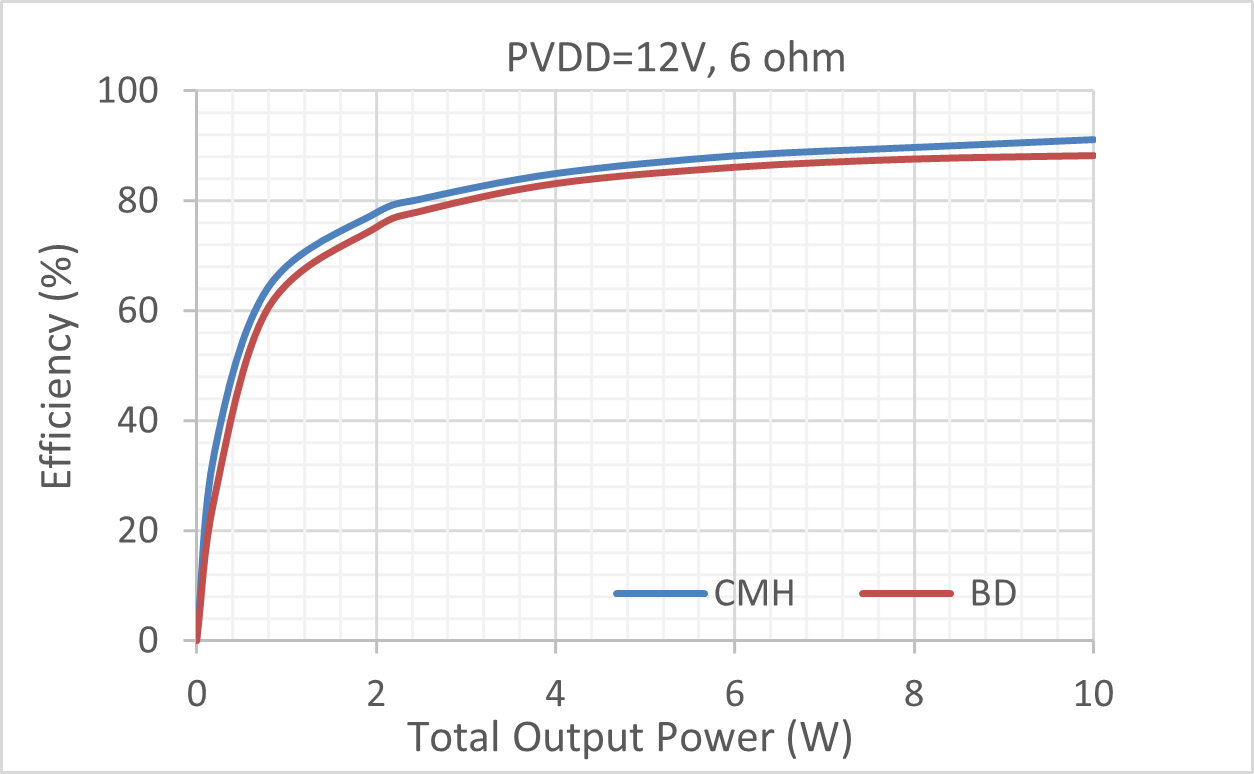
Figure 2. BD vs. CMH Operation: Efficiency at Light Load
1.2 Independent DRC Control Supporting Multi-Channel Speakers
The RT9125 incorporates independently controlled Dynamic Range Compression (DRC) for the left and right channels, specifically designed to address speaker protection requirements in dual-channel and multi-channel systems. Traditional stereo audio amplifiers use a single, unified DRC threshold for both channels, lacking precision in protecting speakers with different characteristics (e.g., tweeters and woofers) and complicating PCB layout.
The RT9125 solves this by enabling separate DRC thresholds for each channel, as illustrated in Figure 3. Users can independently tailor compression thresholds based on each speaker characteristics, such as setting different threshold levels for a tweeter on the left channel and a woofer on the right channel, enhancing protection effectively. Additionally, as shown in Figure 4, the RT9125 supports individual DRC optimization for multi-channel systems, providing greater flexibility in system design while simplifying PCB routing and reducing EMI caused by complex wiring. For further details on DRC configuration, refer to the RT9125 product datasheet.
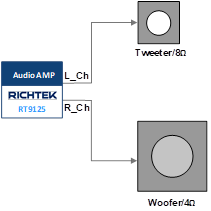
Figure 3. Stereo Speakers (Tweeter and Woofer)

Figure 4. Multi-Channel System
1.3 Simplified Design and Comprehensive Protection
The RT9125 provides 2 × 30W output at 8Ω loads with efficiency reaching up to 94% (PVDD=12V / 8ohm, 2x10W output), as shown in Figure 5, eliminating the requirement for external heat sinks and reducing system manufacturing costs.
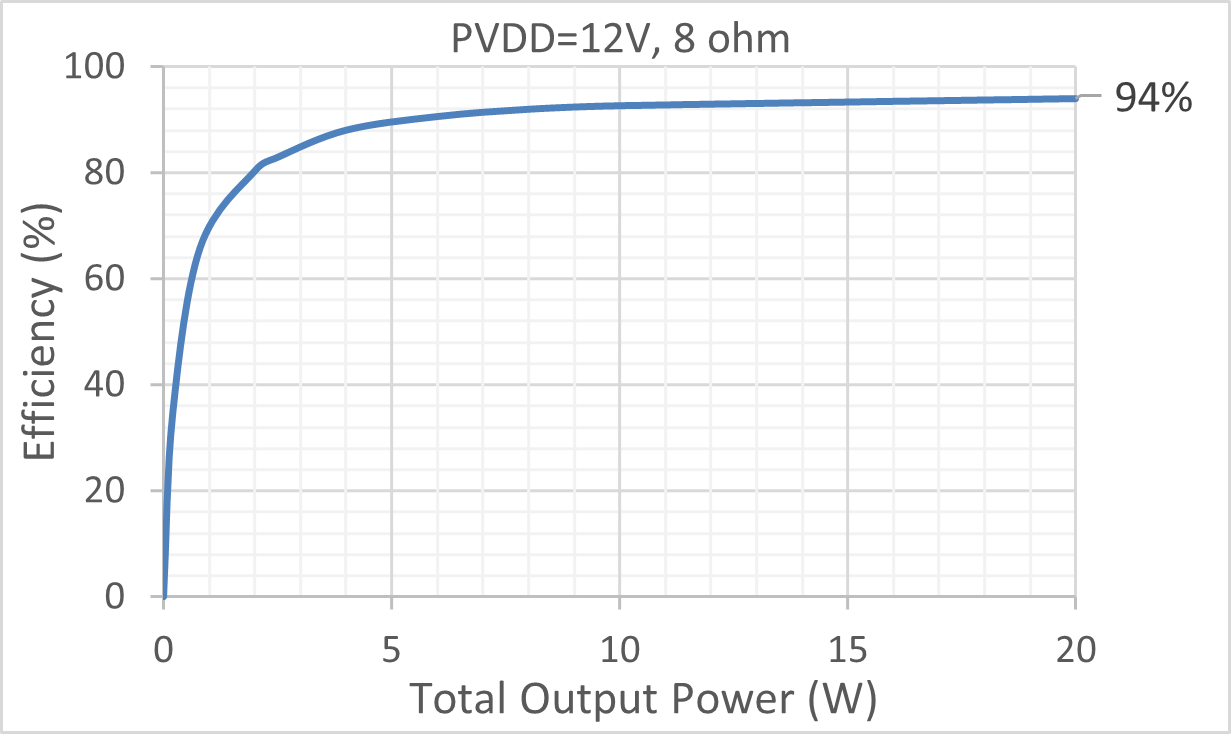
Figure 5. Efficiency at 8Ω Load
In terms of system design, the RT9125 features a switching frequency of up to 768kHz, allowing small and compact filtering components. When operating below 15V, it supports an inductor-less design, simplifying PCB layout and enabling a smaller system footprint.
The RT9125 also features comprehensive protections, including DC-blocking filters, short-circuit detection, thermal shutdown, and more, enhancing reliability and stability.
2 Application Examples
The RT9125 supports up to 16 I²C addresses, ideal for multi-channel audio systems, significantly reducing the number of control signals required from the SoC, thus simplifying the interface design. Figure 6 illustrates a typical soundbar multi-channel audio system application, and Figure 7 demonstrates a reference design for multi-channel LCD/OLED TV systems. The RT9125 effectively accommodates diverse channel configurations, enhancing overall design flexibility and integration efficiency.
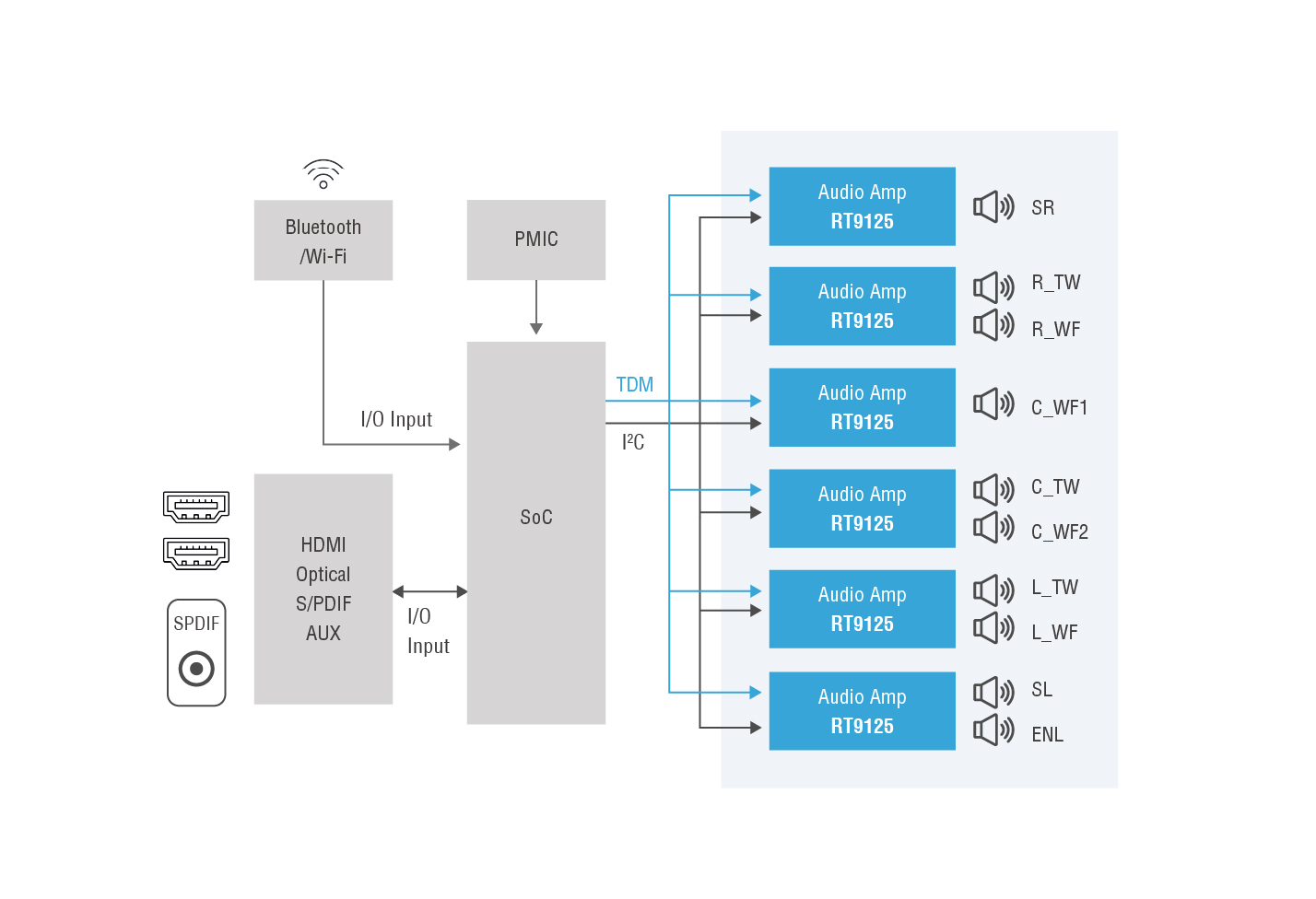
Figure 6. Soundbar System
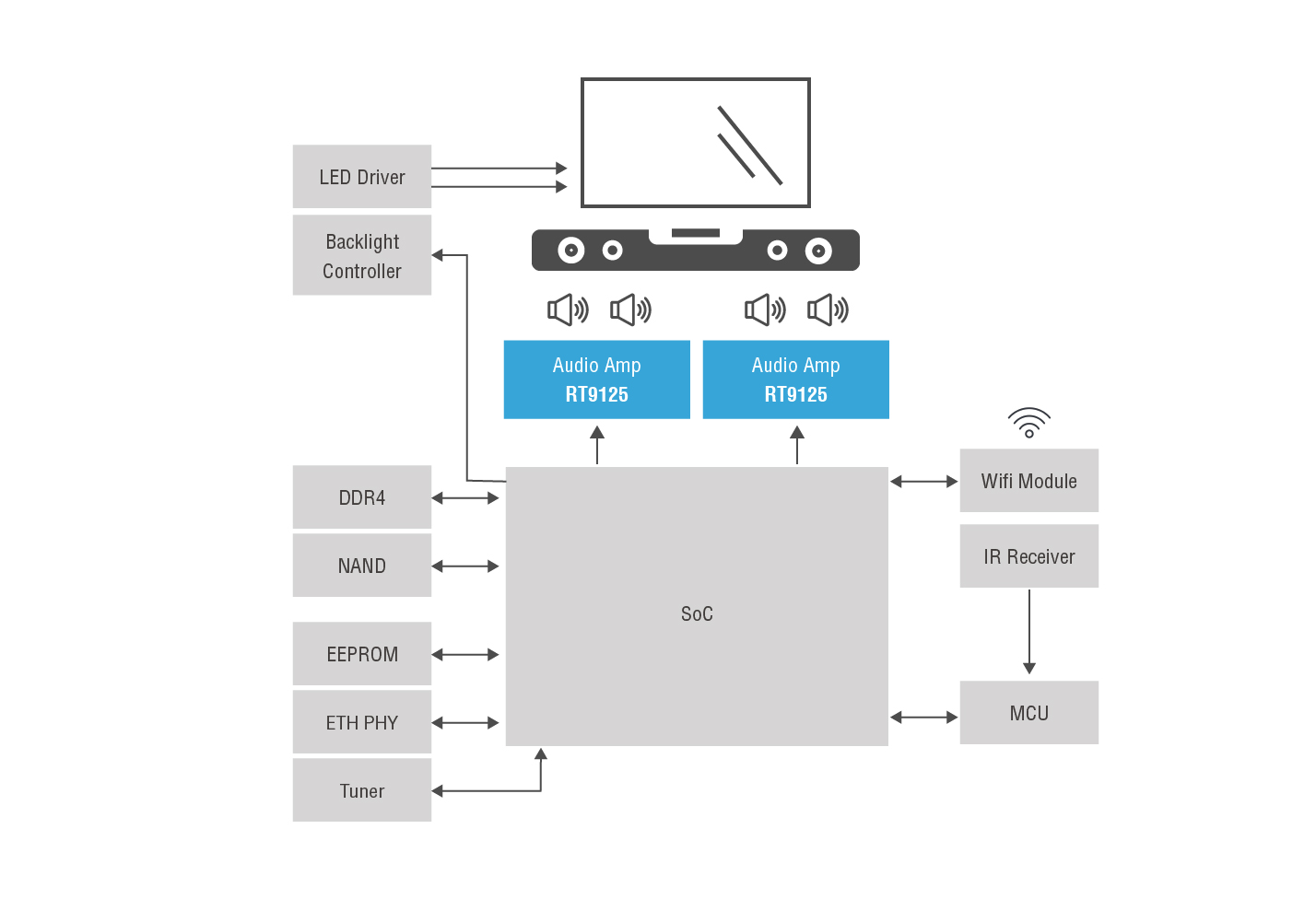
Figure 7. LCD/OLED TV System
Note 1. Figure 6 and Figure 7 are for reference only. Actual products should be evaluated and adjusted based on your specific application requirements. For further assistance, contact our regional office.